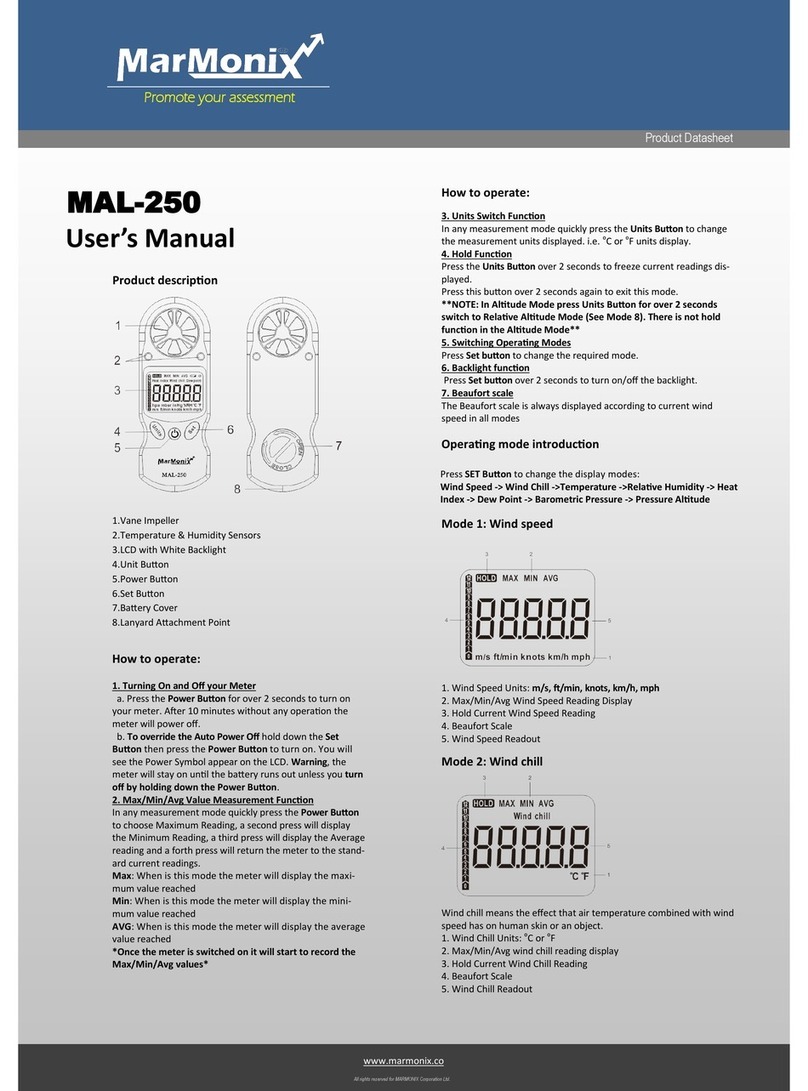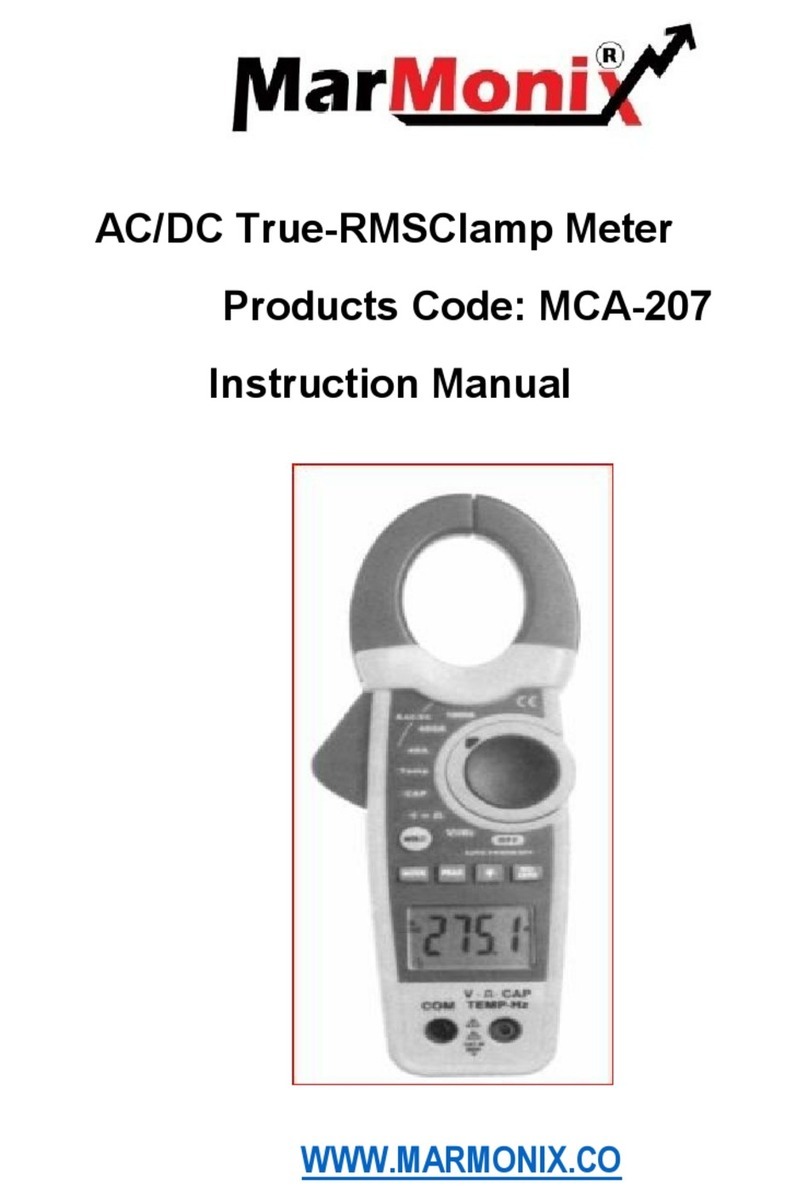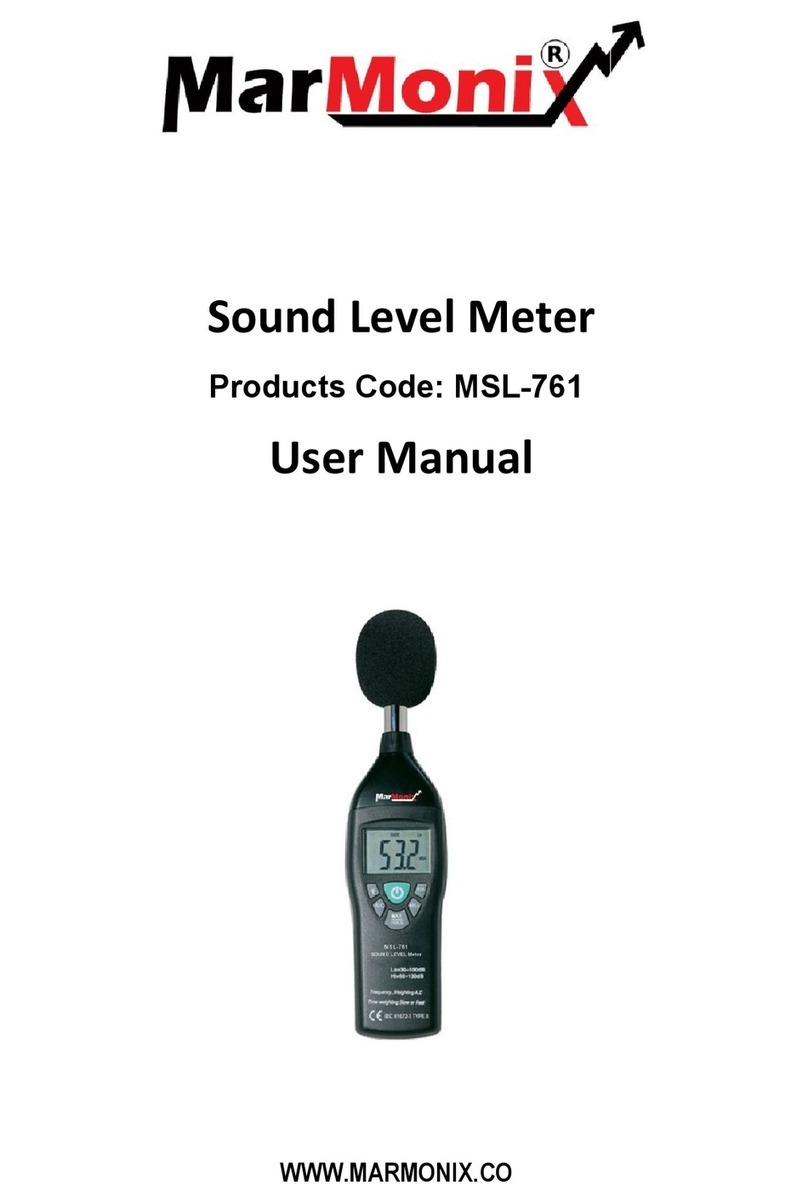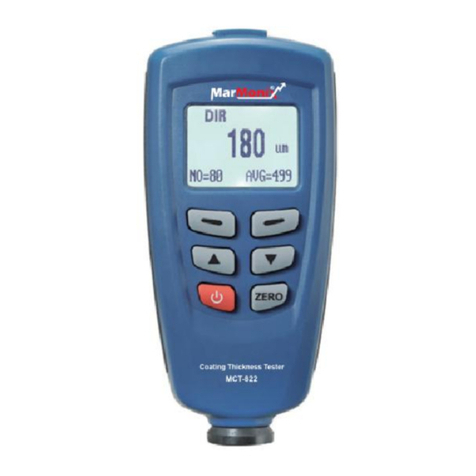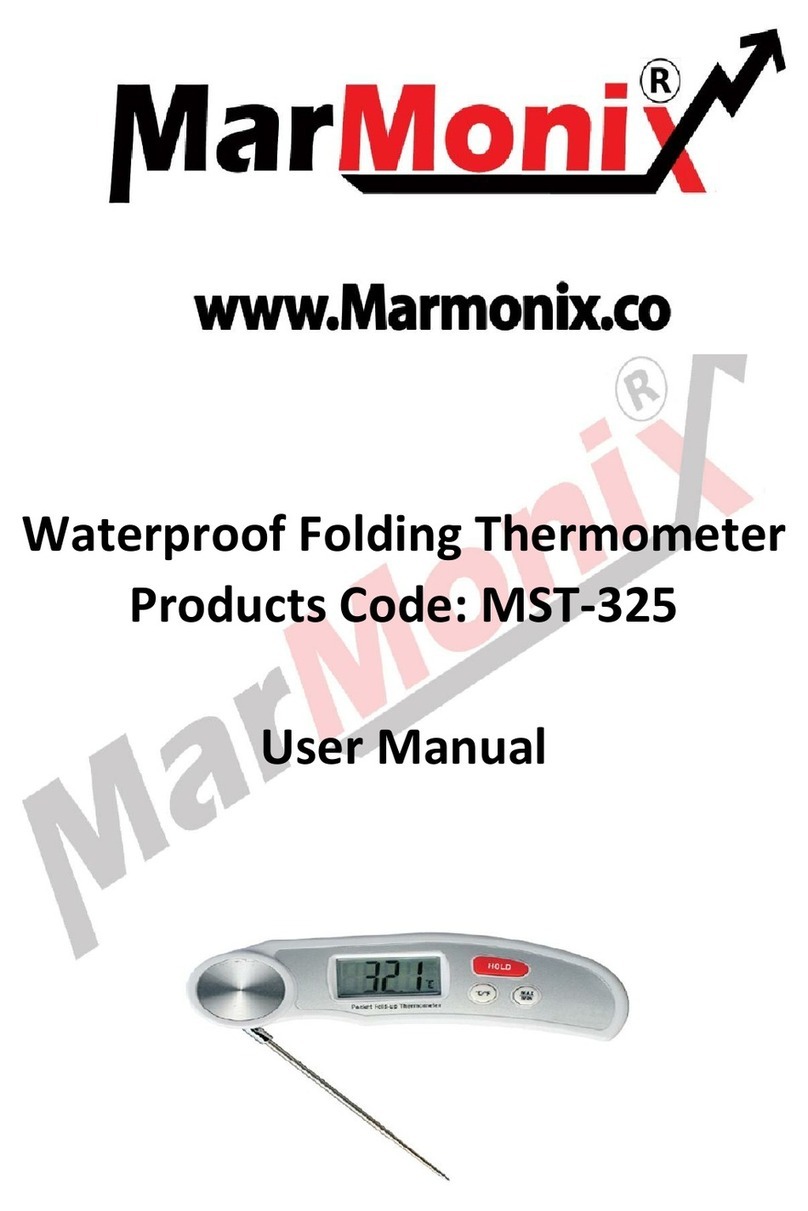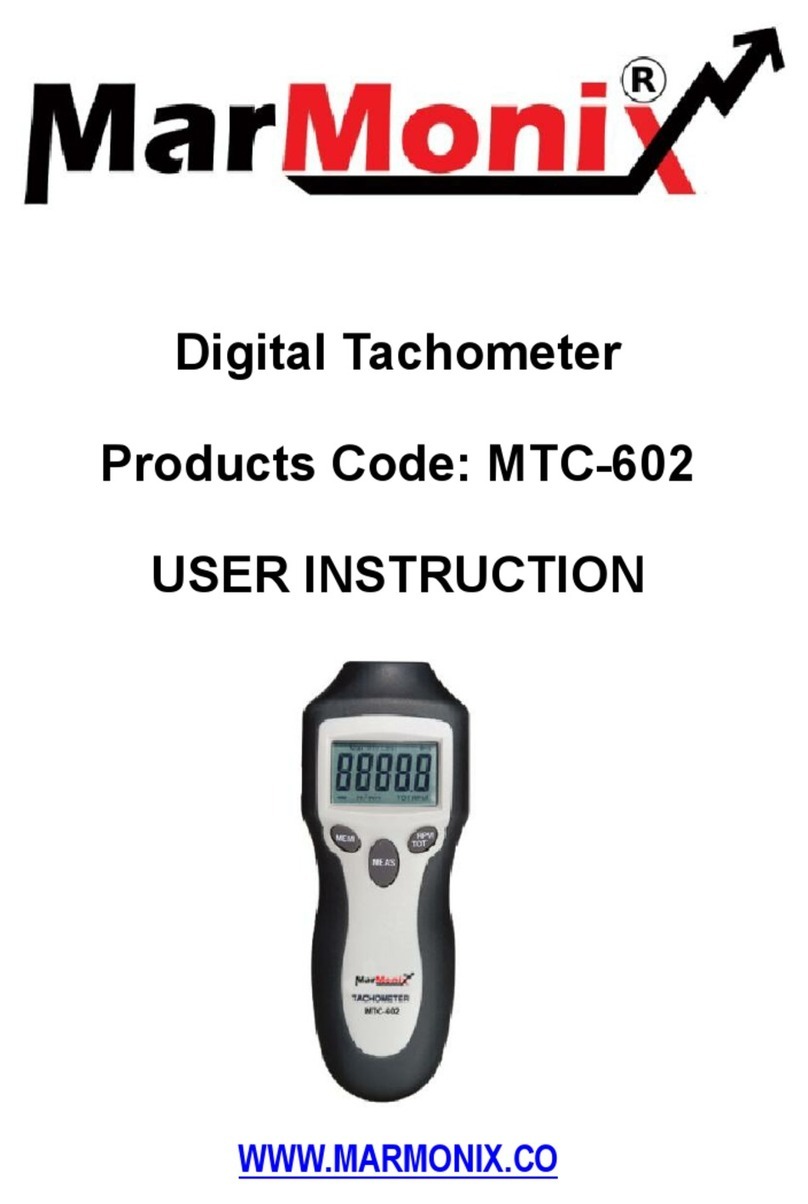
Air Flow Measurements (CMM / CFM)
1. Turn on the meter using the ON/OFF button
2. Press the UNITS button to select the desired air flow units: CMM
(cubic meters per minute) or CFM (cubic feet per minute). NOTE: At
power up the meter will display the last unit of measure previously
entered.
3. To begin entering the area in m2 or ft2, press and hold the AREA
button until it beeps twice. The leftmost digit of the bottom display will
begin to flash.
4. Use the ▲ (UP) button to change the flashing digit
Use the ◄ (LEFT) button to move the decimal
Use ► (RIGHT) button to select the other digits.
After all of the digits are entered, press and hold the AREA button
(until meter beeps twice) to save the area into memory and return to
CFM or CMM measuring mode.
5. Place the sensor in the air stream. Ensure that the air enters the vane
as indicated by the arrow sticker placed inside the vane. Refer to the
diagram.
The meter has 16 memory locations (8 for CFM and 8 for CMM) that
can be used to storel commonly used area sizes that you can recall at anytime.
1. Press the AREA button until meter beeps twice. A memory location number will appear in the top right
of the display indicating the memory location.
2. Push the AREA button to scroll thru and select the desired location. Once you have selected the
desired memory location enter your dimension
Use the ▲ (UP) button to change the flashing digit
Use the ◄ (LEFT) button to move the decimal
Use ► (RIGHT) button to select the other digits. After all of the digits are entered, press and hold the
AREA button (until it beeps twice) to save the area into memory and return to CFM or CMM measuring
mode.
To select and use a previously stored dimension, press and hold the AREA button until it beeps twice.
Press AREA to scroll thru the 8 memory locations. Press and hold the AREA button until it beeps twice.
to return to CFM or CMM measuring mode.
Air Flow Measurements (Up to 20 Point averaging)
1. To enter 20 Point Averaging Mode, press and hold the AVG button until it beeps twice. The AVG icon
will be displayed.
2. Take a measurement and press the AVG button. A single beep will sound and the HOLD icon will
appear in the display.
3. The average reading will be displayed and number of readings measured will appear in the upper right
hand corner of the display. After 5 seconds, the display will return to the current reading. (IMPORTANT:
Please note that the average readings are only held for 5 seconds and cannot be recalled.)
4. Repeat steps 2 - 3 until all desired points have been measured.
5. Press the AREA button to clear the multipoint averaging memory.
6. To return to standard airflow measuring mode press and hold AVG button until meter beeps twice.
Arrow












